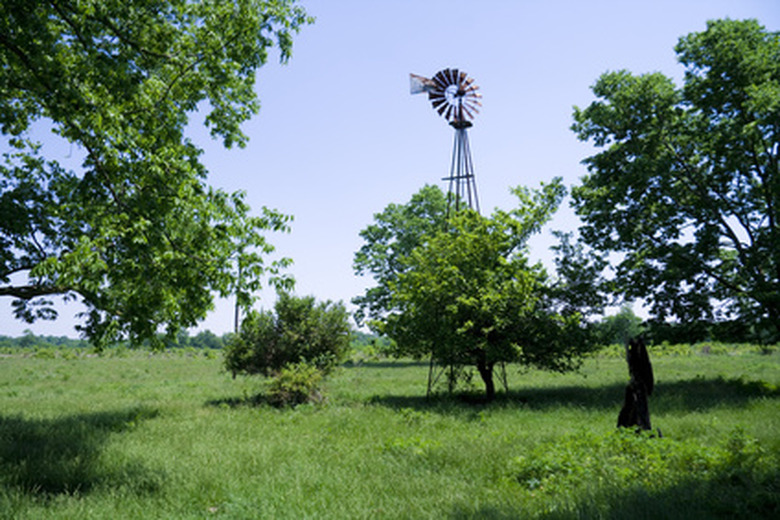Indiana Lawn & Grass Weeds
Weeds, like more desirable plants, have specific horticultural requirements. Their success depends on adaptation to extreme conditions. Weeds prosper while more desirable varieties are withering in the heat of summer or during droughts. All areas have native weeds; most also have non-native weeds that invade and threaten to overgrow not only agricultural and ornamental grasses and plants, but native weeds as well. Indiana has an abundance of both types.
Identification
Indiana is in the Midwest, between Ohio and Illinois. The state reaches from Lake Michigan on the north to the Ohio River on its southern boundary. The Hoosier state straddles USDA hardiness Zone 5, but the Ohio River Valley is in Zone 6. Correspondingly, weeds in southern Indiana often resemble those of Southern rather than Midwestern lawns. Indiana lawns range from cool-season Kentucky bluegrass-fescue mixes in the north to transitional zoysia and tall fescue in the south.
- Weeds, like more desirable plants, have specific horticultural requirements.
- Indiana lawns range from cool-season Kentucky bluegrass-fescue mixes in the north to transitional zoysia and tall fescue in the south.
Time Frame
Lake Michigan and the Ohio River affect Hoosier growing climates. Last average frost dates vary through late April and early May. Evansville, in the southwestern "toe" of the state, is frost-free by the last week in March. Gary, in the northeast corner of the state and on the shore of Lake Michigan, has the latest frost-free date in mid-May. Surprisingly, Scottsburg, atop a plateau and just 30 miles north of Louisville, Kentucky, has a last frost date closer to Gary's than Evansville's.
Annual Grasses
Indiana's annual grass weeds include large and smooth crabgrass and goosegrass, a lookalike with a white center; all three have prostrate crowns. Longspine sandbur is an upright grass that grows in sandy soil along the state's northern border. Annual bluegrass has become common across the state. Annual weed grasses begin germination in very early spring. The most effective controls are pre-emergent herbicides. Corn gluten meal is an alternative organic pre-emergent control for crabgrass.
- Lake Michigan and the Ohio River affect Hoosier growing climates.
- Corn gluten meal is an alternative organic pre-emergent control for crabgrass.
Perennial Grasses
Dallisgrass, an upright clump grass, grows across Indiana. Yellow nutsedge favors low-lying, poorly-drained soil, but spreads easily by seed and stolons into lawns. Bermuda grass is a warm season grass that escapes into neighboring lawns as a weed along the Ohio River. Nimblewill is a more widespread stoloniferous grassy weed that resembles Bermuda grass. Rough bluegrass is a warm season grass native to the Southeastern U.S. that has migrated throughout Zone 6. Perennial weeds require post-emergent herbicides; their established roots must be destroyed with a systemic herbicide.
Broadleaf Weeds
Annual broadleaf weeds include ground ivy, (creeping Charlie, creeping Jenny), white clover, common chickweed and black medic. Common dandelion, assorted plaintains, prostrate spurge (milk purslane), and prostrate knotweed are statewide perennial broadleaf lawn weeds. Purslane is prevalent in the north and Japanese clover afflicts lawns in the southeast. Weed and feed products containing 2,4-D, MCPP and dicamba control broadleaf lawn weeds.
- Dallisgrass, an upright clump grass, grows across Indiana.
- Yellow nutsedge favors low-lying, poorly-drained soil, but spreads easily by seed and stolons into lawns.
Invasive Weeds
Indiana prohibits especially troublesome noxious weeds, including Canada thistle, Johnsongrass and quackgrass. The state restricts growing ox-eye daisy and pennycress. Thirty-four plants have been designated as invasive, including Canada thistle, ground ivy, purple winter creeper, sweet clover and tall fescue.
